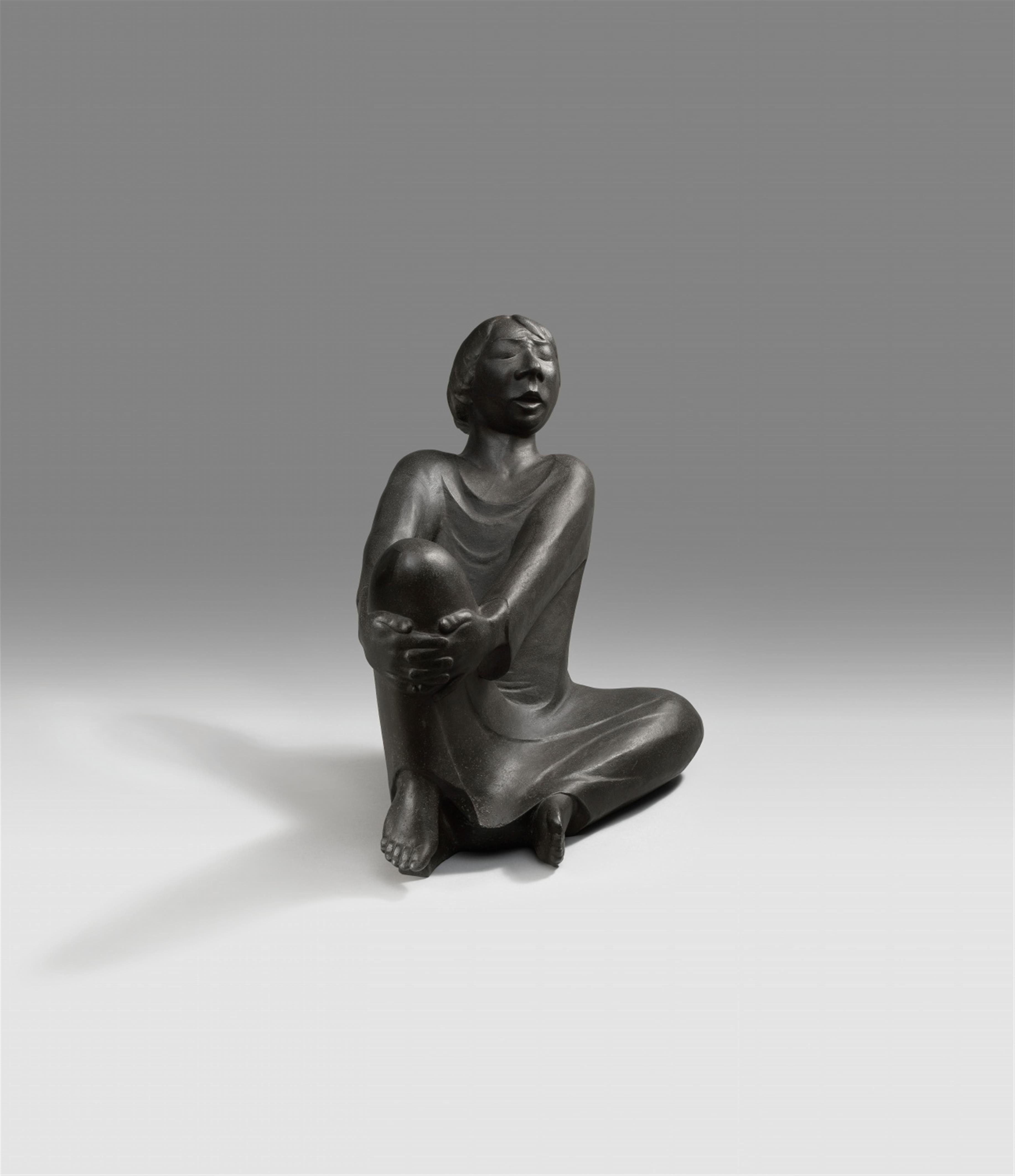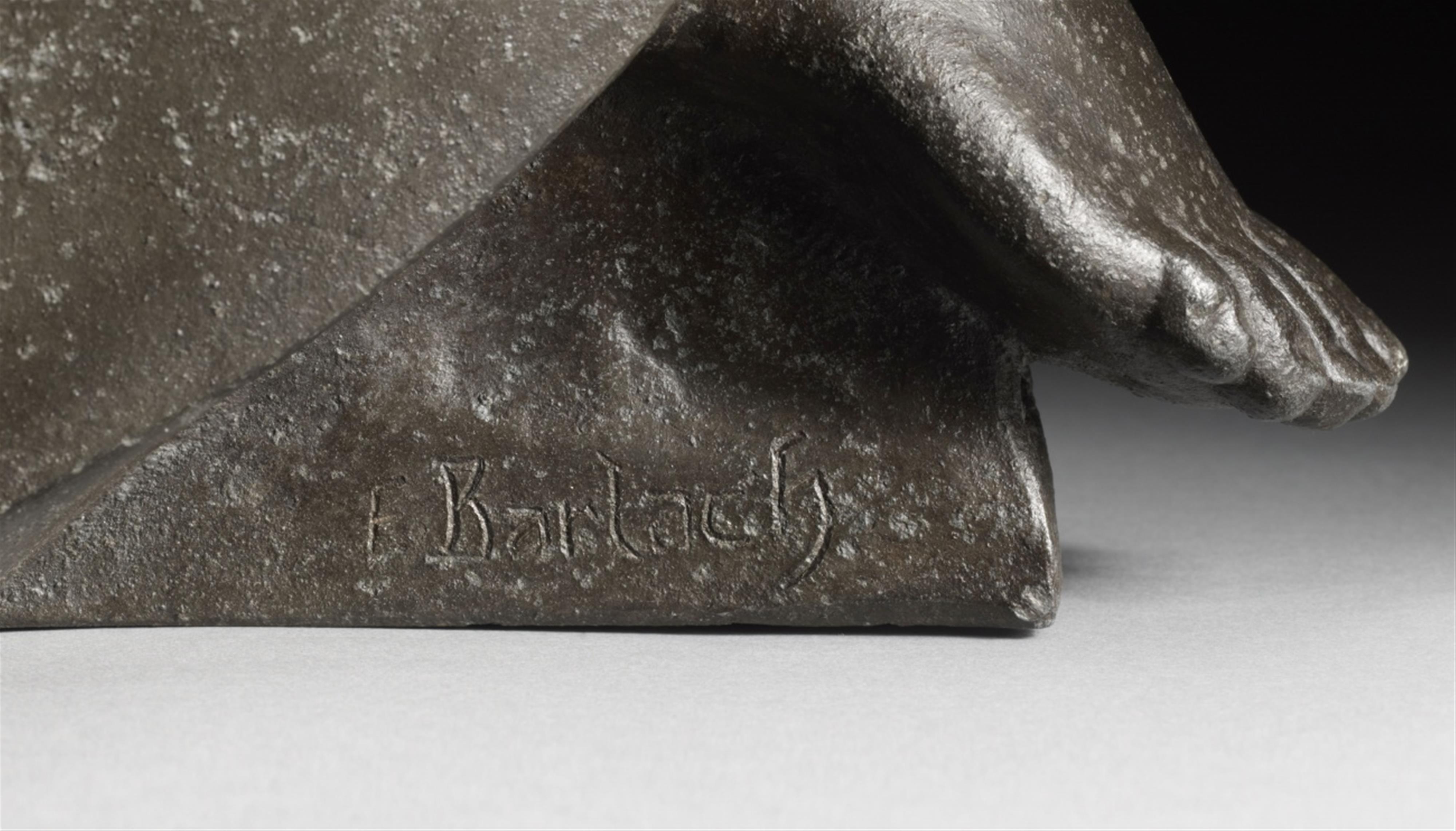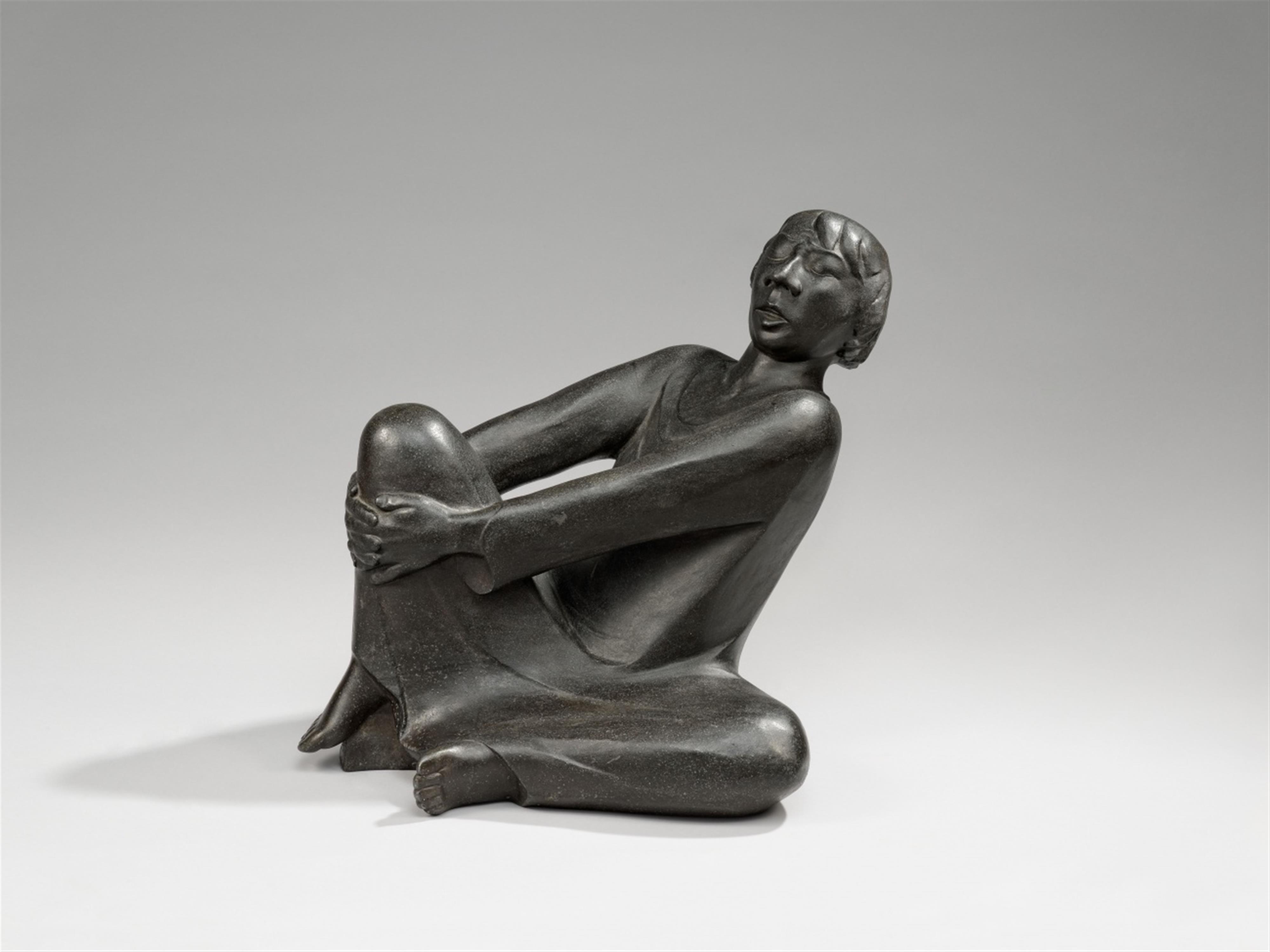Ernst Barlach
Der singende Mann
1928
Zinc Height 49.9 cm Signed 'E Barlach.' to the side of the support beneath the right foot. Posthumous cast, 1940. One of four known zinc casts. Foundry Hemann Noack, Berlin. - With fine zinc-coloured surface, slightly porous due to material. - With a bullet hole to the right buttock (approx. 3 x 4.3 cm) as well as a smaller, professionally closed bullet hole to the left knee. Two professionally inserted original bronze patches for closing the casting channels on the right knee and to the back of the head.
This previously unknown zinc cast was presumably commissioned from the Berlin foundry “Bildgießerei Hermann Noack” in 1940 by Ernst Barlach's secretary and assistant of many years, Bernhard A. Böhmer. After Barlach's death, Böhmer was authorised to have an example cast for his own private collection of each of Barlach's works which had been approved for casting in bronze (cf. Volker Probst, Die Bronzen im Werk Ernst Barlachs, in: Ursel Berger, Klaus Gallwitz, Gottlieb Leinz (eds.), Posthume Güsse: Bilanz und Perspektiven; Bd. 2 der Reihe Bildhauerei im 20. Jahrhundert, Berlin/Munich 2009, p. 110). Presently we know of only three other zinc casts of the “Singender Mann”: these are located in museum collections in Hamburg, Güstrow and Wuppertal. All of the casts that Barlach as well as Kollwitz commissioned from Noack during the war were carried out in zinc or, alternatively, zinc alloys on account of the wartime rationing of metal, particularly of casting material (cf. Annette Seeler, “Weil ich für ein großes Publikum arbeiten möchte”: Zur Gusspraxis von Käthe Kollwitz und ihren Erben, in: Ursel Berger, Klaus Gallwitz, Gottlieb Leinz (eds.), Posthume Güsse: Bilanz und Perspektiven; Bd. 2 der Reihe Bildhauerei im 20. Jahrhundert, Berlin/Munich 2009, p. 132). The Barlach committee, which already existed at that time, felt that this recourse to the new material was fully satisfactory (cf. Volker Probst, Die Bronzen im Werk Ernst Barlachs, ibid., p. 114). Thus, zinc exemplars were cast of a total of eleven works by Barlach during the Second World War.
The distinct aesthetic of a zinc cast is interesting, because its patina has a somewhat more matt, cool and architectonic effect than in the case of a bronze.
With the extraordinarily beautiful, open pose of his body and his devoted expression, the sculpture of "Singender Man" is to be counted among the incunabula of German sculpture and among the masterpieces within Barlach's oeuvre. Inwardly and outwardly moved, the intensity of his feeling is rendered visible. In spite of the cheerfulness that he radiates, the singer seems concentrated on his singing.
Whether and how the two 'gunshot wounds' came about during the war remains uncertain. In any case they provide evidence for an interesting and colourful anecdote about this beautiful and authentic piece; thus, up to now, a decision has been made against restoration.
Catalogue Raisonné
Laur 432; Schult I 343
Certificate
With a confirmation by Ernst Barlach, Ratzeburg, dated 11 August 2015. We would like to thank Hermann Noack sen. and Hermann Noack jun., Foundry Noack Berlin, for the confirmatory information regarding the cast's authenticity.
Provenance
Bernhard A. Böhmer; acquired from the former owner in the 1970s in East Germany (Mark Brandenburg), in family possession since, North Germany
Literature
i.a.: Ernst Barlach, Ein selbsterzähltes Leben, 1928, plate 69; Carl Dietrich Carls, Ernst Barlach. Das plastische, graphische und dichterische Werk, Berlin 1931, p. 45 with illus. and Berlin 1950 p. 61 with illus. resp.; Friedrich Schult (ed.), Ernst Barlach. Sechsundvierzig Bilder. Potsdam 1950, plate 40; Anita Beloubek-Hammer, Ernst Barlach, Plastische Meisterwerke, Leipzig 1996, p. 116. f.; Helga Thieme, Ernst Barlachs Skulptur "Der singende Mann" in der Ausstellung "Neue deutsche Kunst", Oslo 1932, in: exhib. cat. Kunsthalle Rostock, Ernst Barlach, Artist of the North, Hamburg/Güstrow 1998, p. 310 ff.; Eva Caspers, Der singende Mann, in: Ernst Barlach Haus Hamburg, Munich 2000, p. 93 ff. with colour illus. p. 94/95
Exhibitions
i.a.: Berlin/Düsseldorf 1930 (Galerie Flechtheim), Bronzen von Ernst Barlach, cat. no. 19; Dresden 1931 (Galerie Ernst Arnold), Bronzen von Ernst Barlach; New York 1931 (Museum of Modern Art); Oslo/ Copenhagen/ Cologne 1932, Nyere Tysk Kunst, cat. no. 6; New York 1939 (Museum of Modern Art), Art in Our Time; Hamburg 1977 (Ernst Barlach Haus), Foundation Hermann F. Reemtsma, Plastiken, Handzeichnungen und Autographen, cat. no. 53; Antwerp 1994/1995 (Koninklijk Museum voor Schone Kunsten), Ernst Barlach, cat. no. 187 with iilus.; Bergen/ Güstrow 2000 (Bergen Kunstmuseum/ Ernst Barlach Stiftung Güstrow), Ernst Barlach, Ein Graphiker und Bildhauer des deutschen Expressionismus, no. 92






